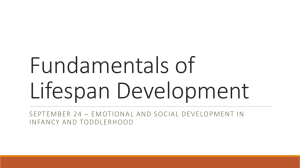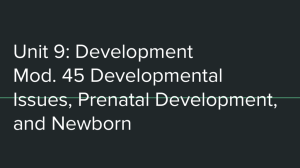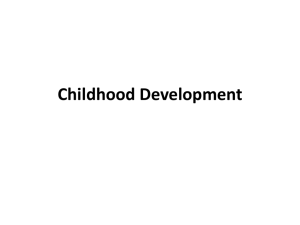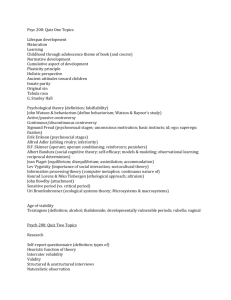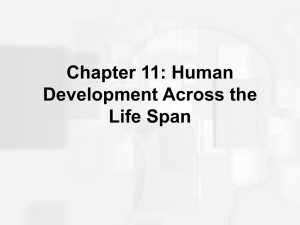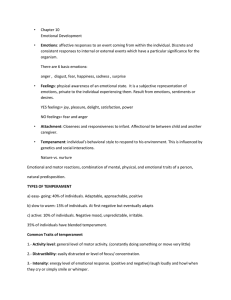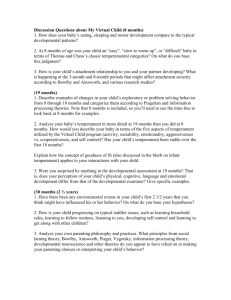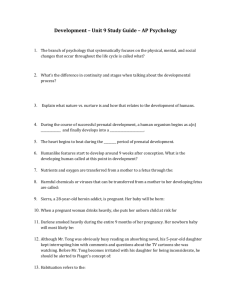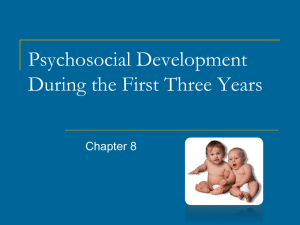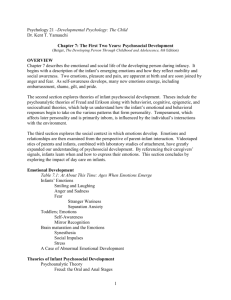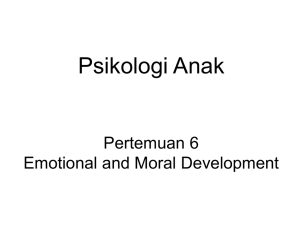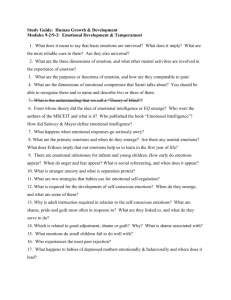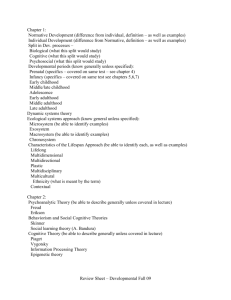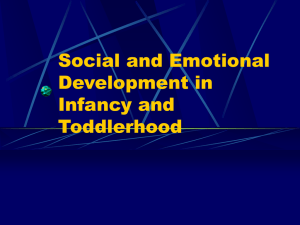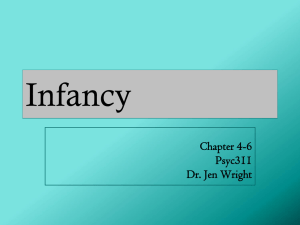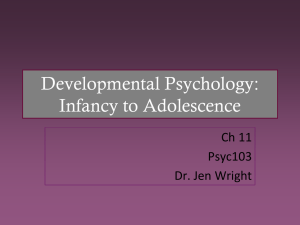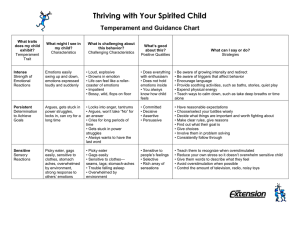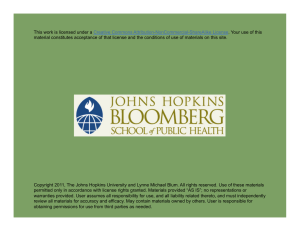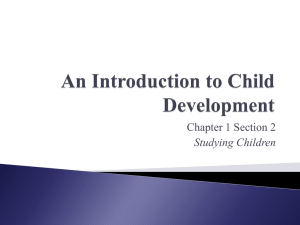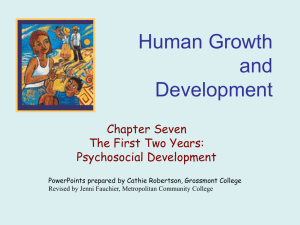Chapters 4-6 (Infancy) Study Guide
advertisement
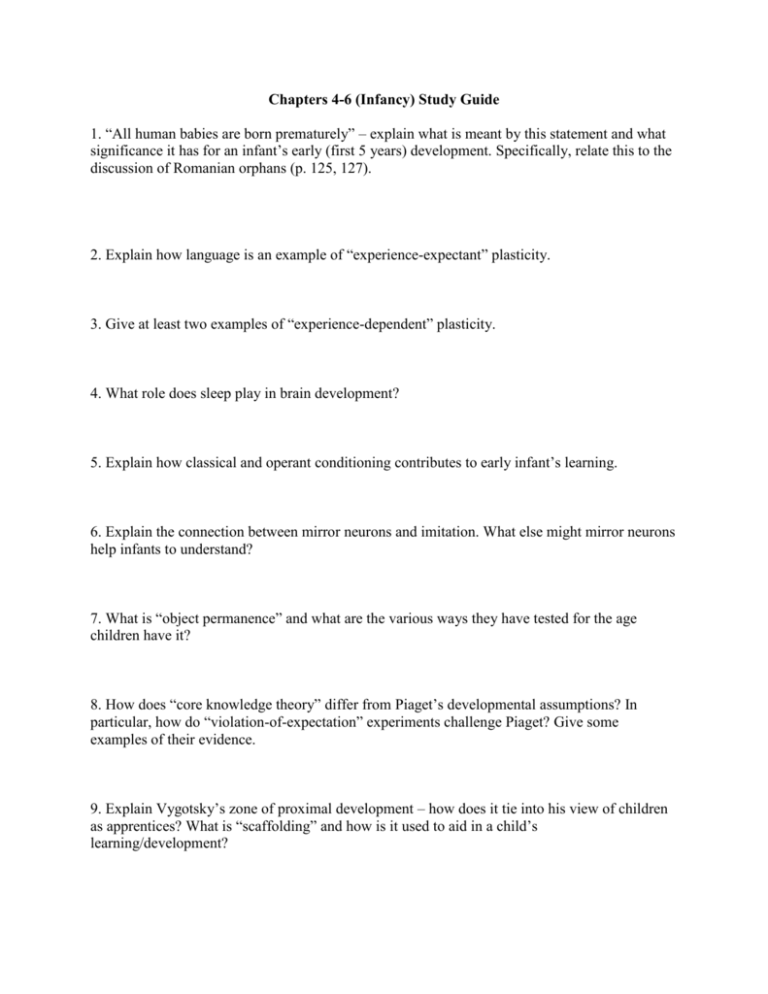
Chapters 4-6 (Infancy) Study Guide 1. “All human babies are born prematurely” – explain what is meant by this statement and what significance it has for an infant’s early (first 5 years) development. Specifically, relate this to the discussion of Romanian orphans (p. 125, 127). 2. Explain how language is an example of “experience-expectant” plasticity. 3. Give at least two examples of “experience-dependent” plasticity. 4. What role does sleep play in brain development? 5. Explain how classical and operant conditioning contributes to early infant’s learning. 6. Explain the connection between mirror neurons and imitation. What else might mirror neurons help infants to understand? 7. What is “object permanence” and what are the various ways they have tested for the age children have it? 8. How does “core knowledge theory” differ from Piaget’s developmental assumptions? In particular, how do “violation-of-expectation” experiments challenge Piaget? Give some examples of their evidence. 9. Explain Vygotsky’s zone of proximal development – how does it tie into his view of children as apprentices? What is “scaffolding” and how is it used to aid in a child’s learning/development? 10. What are the different theories for language development? Which view does research with non-human primate language development best support? 11. Explain the role of cooing and babbling and joint attention in the development of language. 12. Describe the three different language styles and how they differ from one another. 13. What is child-directed speech and what is its function? 14. What is Erickson’s first and second stage of development? 15. What are the basic emotions? What are the self-conscious emotions? Explain the difference between them. Explain the relationships between the self-conscious emotions and the child’s developing self-awareness. 17. What does self-regulation of emotions require and how do children learn it? What are social contagion and social referencing and how are they related to a child’s self-regulation? 18. What is temperament? Explain the three basic temperament styles. What sorts of things influence the development of temperament? Explain the relevance of “goodness-of-fit” for temperament development. 19. What is attachment? Explain what early theorists believed it was and how Harlow’s theory differed. What evidence did he give for his theory of attachment? 20. What is an internal working model? Explain the different types of failure of attachment?
